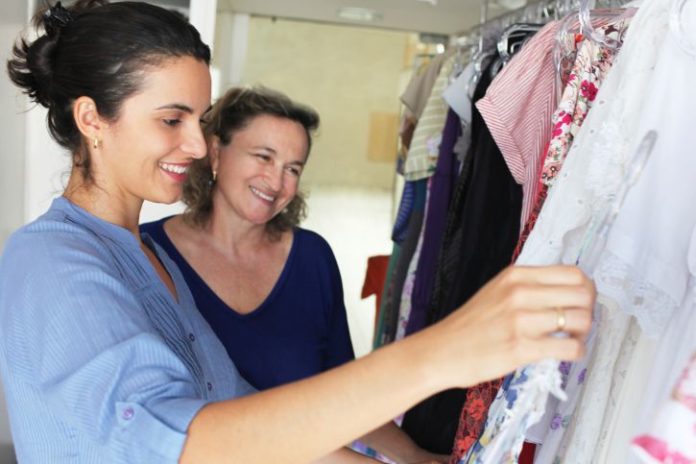Daughters – if you feel like you are shopping with your mother on your shoulder, you are probably right, research by Deakin and Michigan State Universities has found.
Dr Stella Minahan and Professor Patricia Huddleston investigated the mother-daughter shopping relationship asking women in the US why they shop together, what they value about shopping together and how they influence each other when they do shop.
“Mothers’ and daughters’ purchasing power is critical to the success of the retail industry, not just in the United States,” Dr Minahan said.
“Indeed many cultures consider the value and worth of a woman to be closely allied to their skills as a shopper and consumer for their family.
“While researchers, including ourselves have looked at the shopping experience between young adult women and their mothers, few researchers have looked at the shopping relationship later in adulthood.”
Dr Minahan said the findings had implications for marketers, advertisers and retailers particularly around merchandising and strategies targeting this group.
Dr Minahan said for mothers and daughters shopping together offered daughters a chance to gain psychological and financial independence.
“Younger women liked shopping with their mothers because ‘she would pay for things’ but among older women it was a point of difference that they didn’t their parents to pay for things anymore,” she said.
“Mothers also shaped their daughters’ shopping values, with the women we talked to reminiscing about shopping at second-hand and used clothing stores.
“Being frugal was part of their identity even though they themselves were well-off.”
Dr Minahan said shopping together was also a safe place for daughters to express independence.
“The women interviewed trusted their mother to assist them in gaining the skills of shopping as part of her nurturing role,” she said.
“Eventually the daughter would act on her own and gain more independence through the shopping experience by refusing to accept the mother’s decision-making.
“This struggle for independence can be fraught with conflict and stress, yet interestingly our results indicate that the shopping environment is a safe place to express this independence.”
Dr Minahan said shopping was also an experience mothers and daughters used as a planned way of spending time together and bonding – a pattern which continued over decades and through many life changes.
“One of the women we spoke to spent six hours shopping with her mother and another woman spent 10 hours, then they spent more time together going over what they had bought,” she said.
“Even for women who dislike shopping, shopping was seen as a pleasurable way to connect with their mother and the memories created are cherished for decades.”
Dr Minahan said mothers and daughters influenced each other in their shopping habits.
“At first the mother coaches the daughter’s shopping skills and then at an unspecified time, the roles are reversed with the daughter coaching on brand and style choices as well as online shopping techniques,” she said.
“The vast majority of adult children offer information and advice to their parents on purchase decisions, with daughters having greater influence than sons.”
Dr Minahan said the mother’s influences continued even after death.
“As one woman in her fifties remarked she shopped with her mum on her shoulder.”
Source: Deakin University Australia










